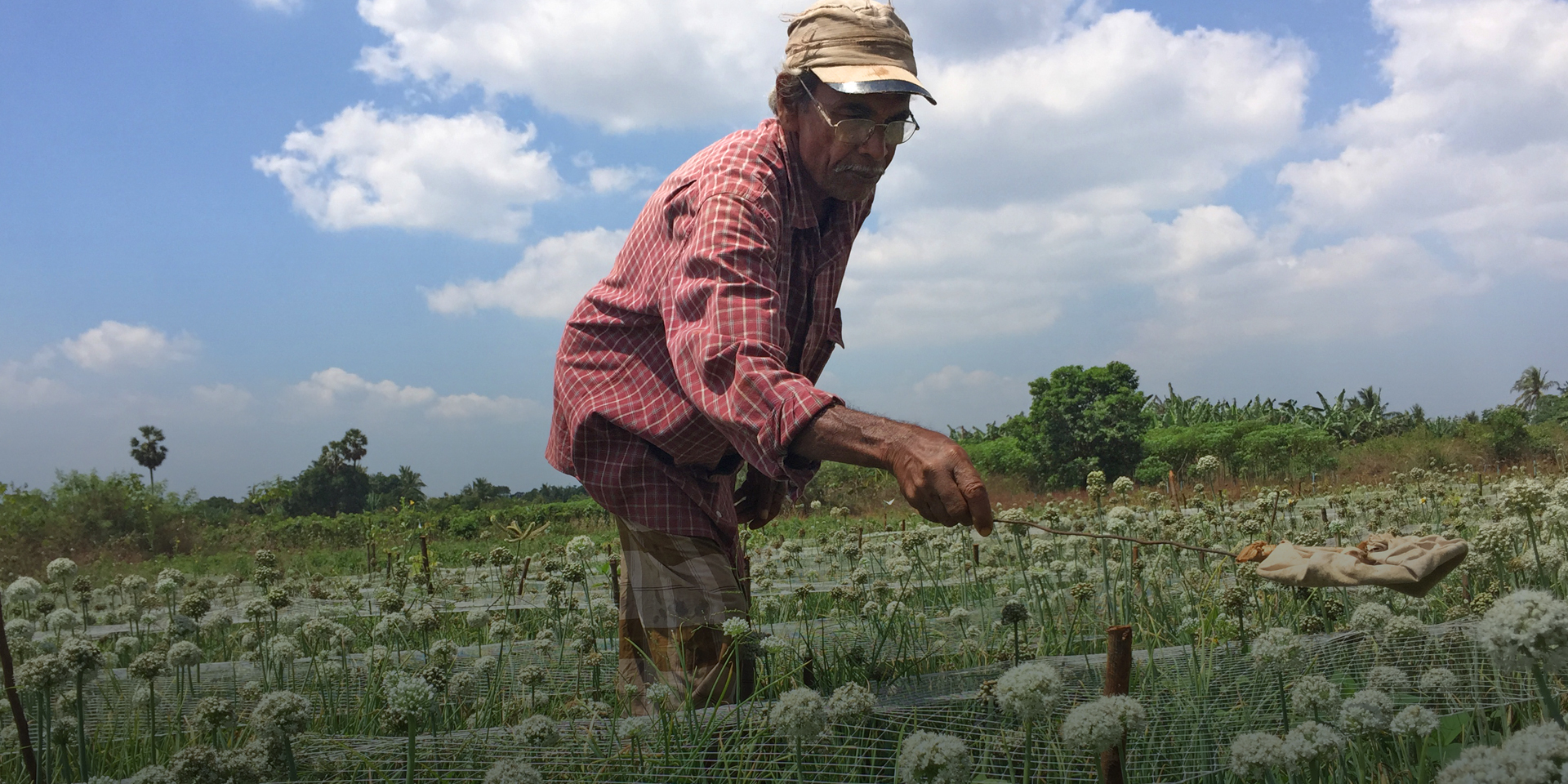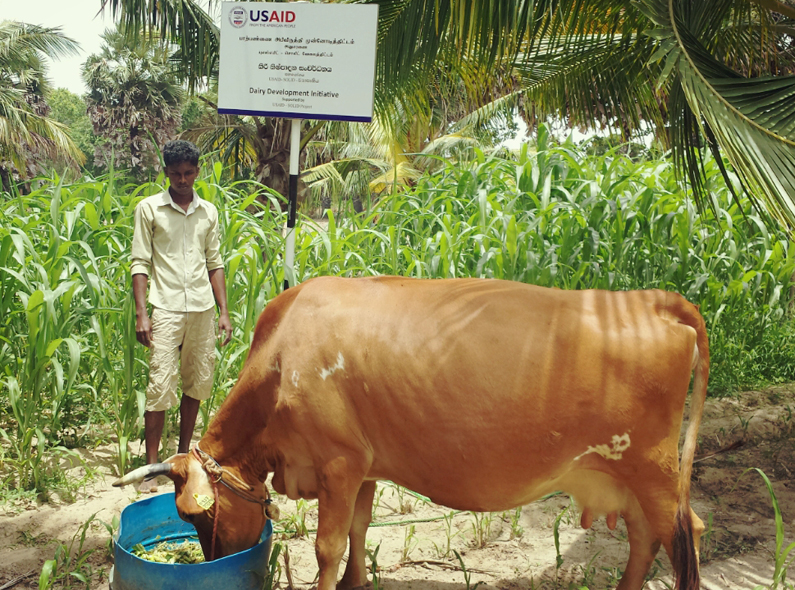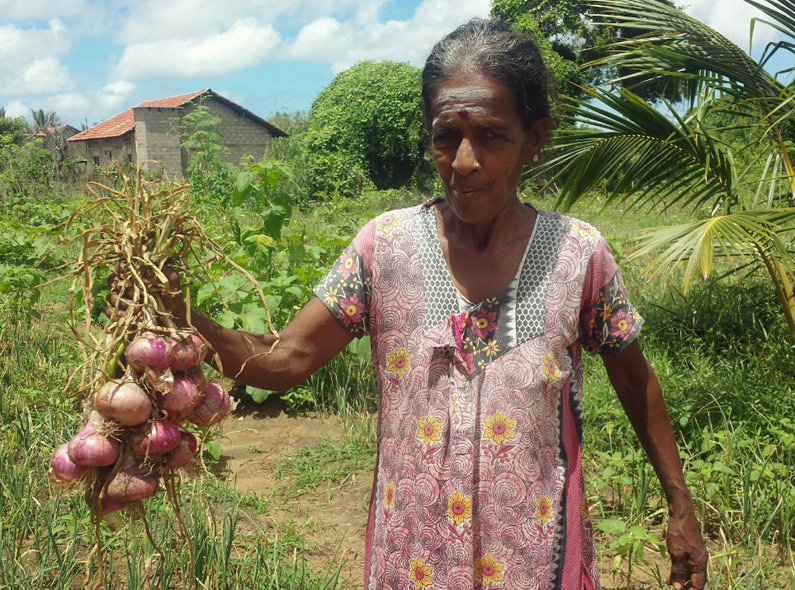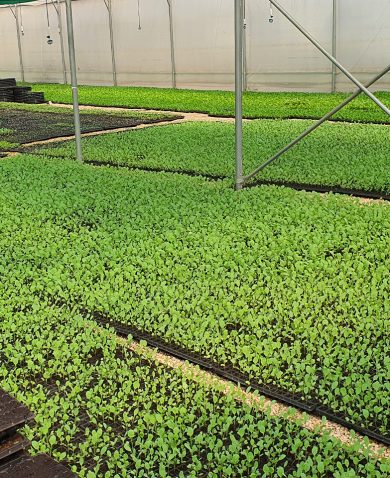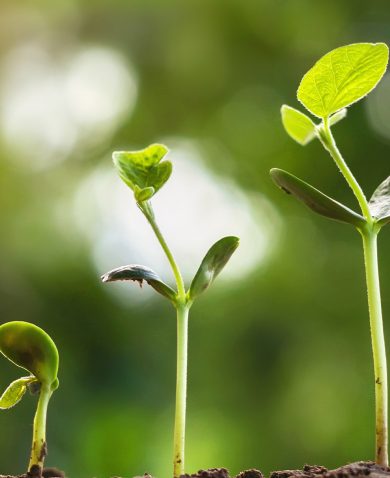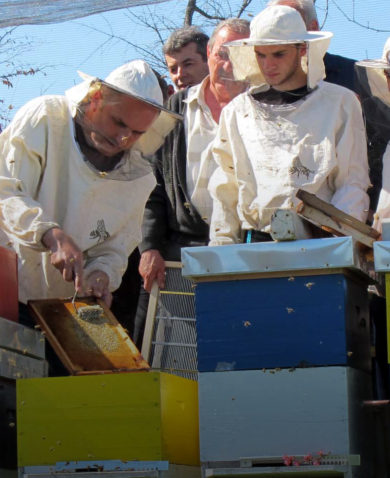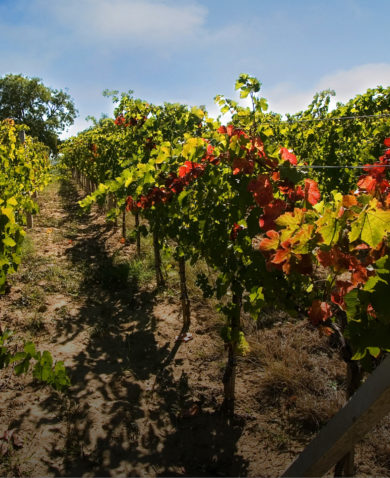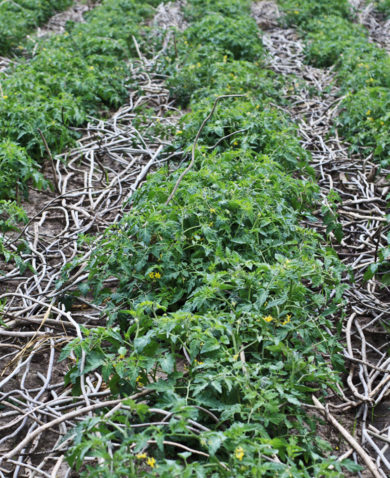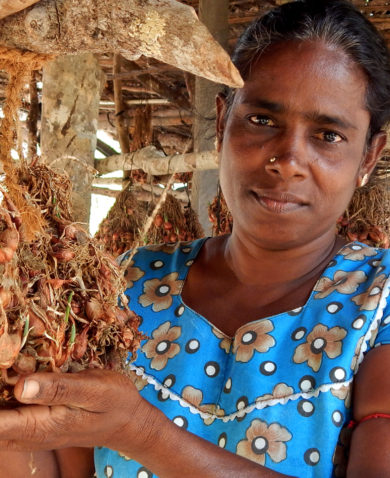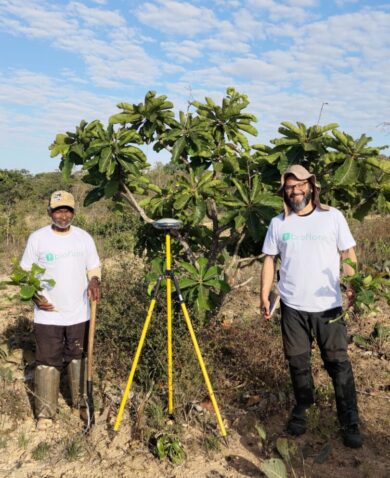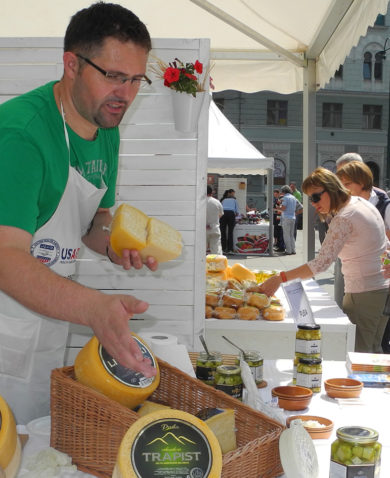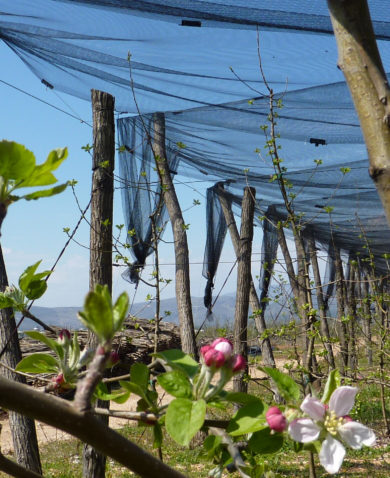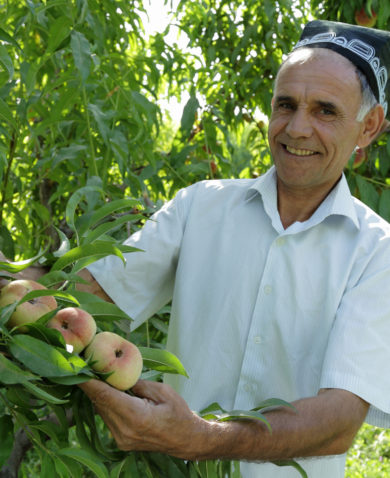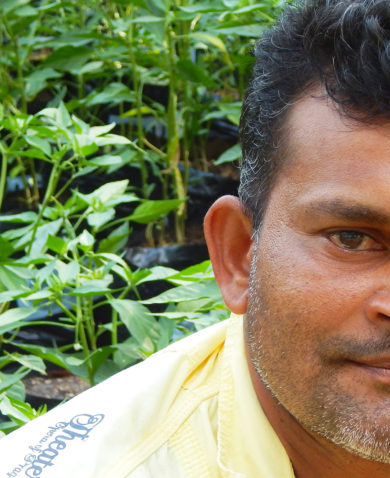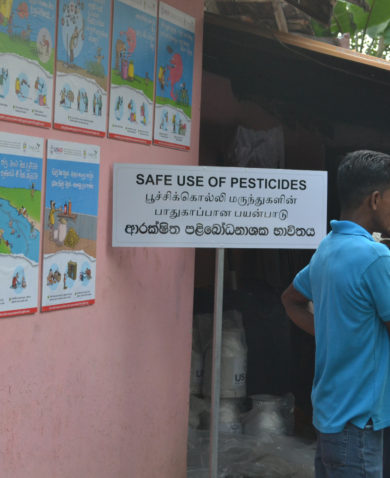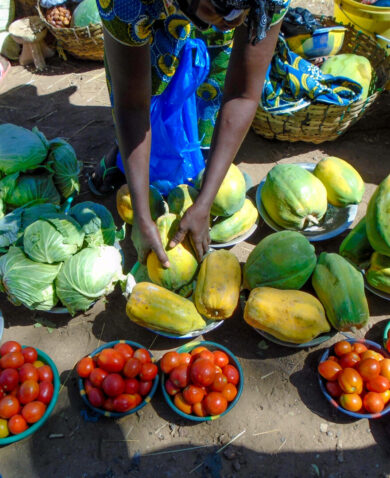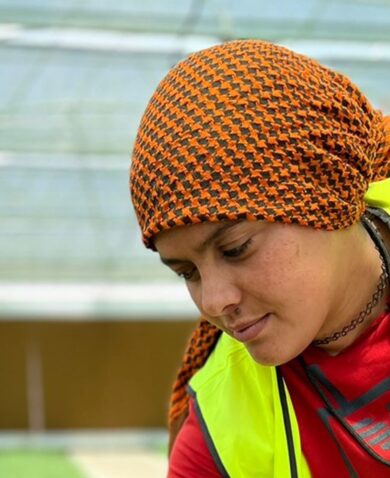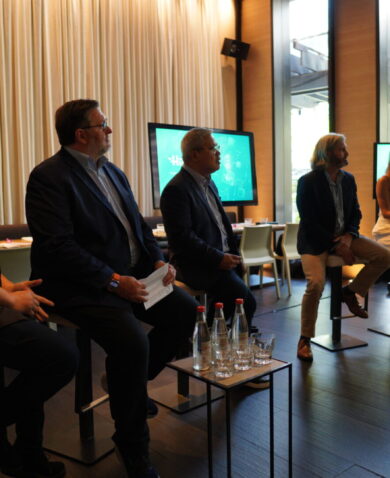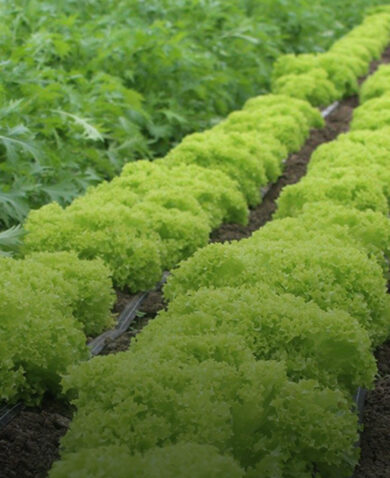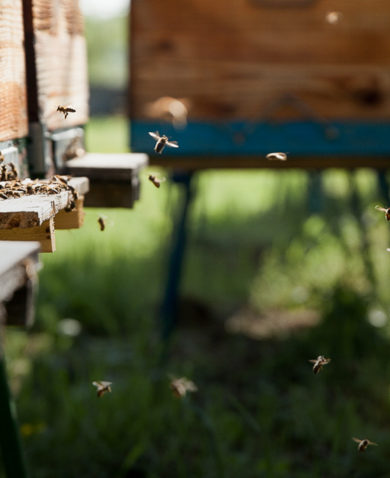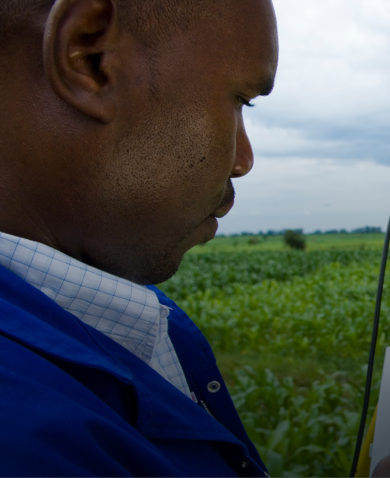Furthermore, Mr. Sivanesan can now sell the extra silage to bring in additional income, due to increased market access. “I realize now that I was not reaching my full potential. I can see that traditional methods alone won’t help me to become a commercial dairy farmer. I am ready and eager to grow.”
The project has also gone a long way in helping farmers incorporate new farming methods and technology in the horticulture sector. For example, chili production had hit an all-time low in the north-central Anuradhapura District — a traditional chili growing area — due to difficulties in marketing and cultivation. To combat some of the cultivation obstacles, SOLID project staff brought sprinkler systems to Anuradhapura and helped 62 chili farmers install and implement the new tools.
“We had a high cost of production and low yields because of pest attacks and it became difficult to make a profit from chili,” said Lasantha Wickramasinghe, a farmer from the district who comes from a long line of chili farmers. “Even so, people here have been farming for generations, so we were very skeptical about these new sprinkler systems.”
The sprinklers, which cover one-quarter acre of land, minimize the damage to plants during the watering process and reduce pest attacks by washing away insects. Like many farmers in the area, Mr. Wickramasinghe had never seen sprinklers, but noticed a change as soon as two months after installation. “The sprinklers have made a world of difference to us, and it has really reduced our cost of production,” he said.

